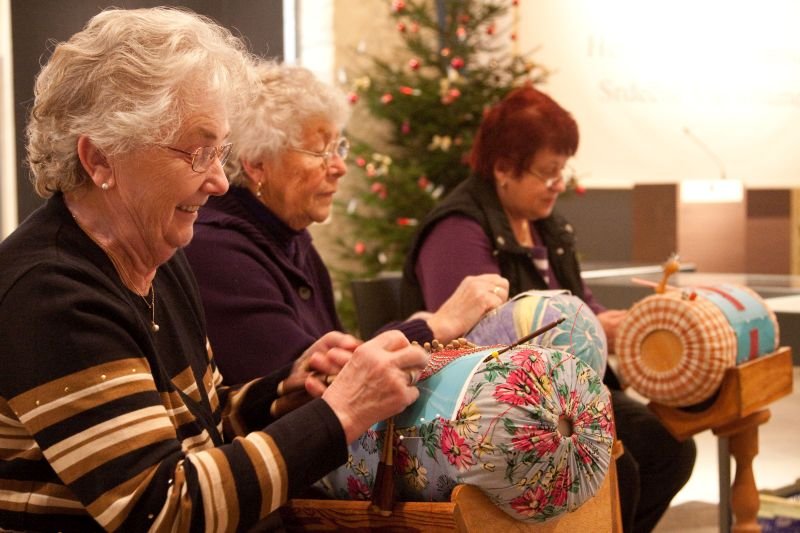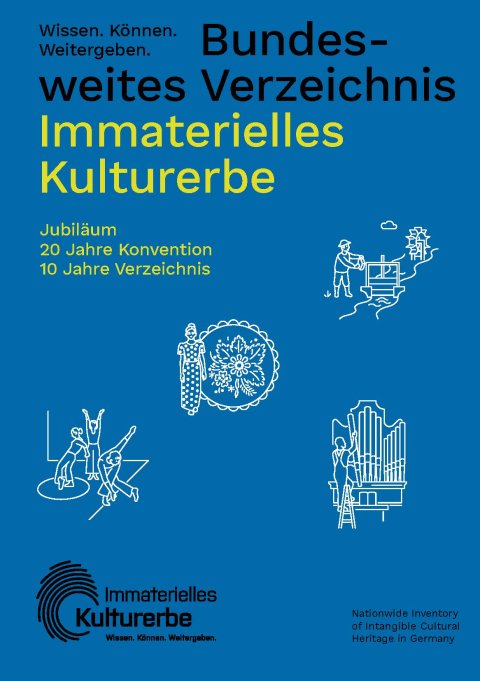Nationwide Inventory of Intangible Cultural Heritage
Bobbin-Lace Making in the Upper Palatine Forest

In the Upper Palatinate Forest, “Spitzenklöppeln” (bobbin lace-making) has been a practice passed down from generation to generation since the 19th century, which until today is an essential part of the local identity. When making bobbin lace, threads wrapped around lathed sticks called “lace bobbins” are interwoven by systematic crossing and twisting. An important aid is provided by pins which the threads are knotted around.
Facts & figures
Crucial date: all seasons
Inscription: 2016
Domains: oral traditions and expressions; traditional craftsmanship
Where to find: Upper Palatinate Forest (Bavaria)
Contact
Klöppelkreis Schönsee – Tiefenbach – Stadlern
Gemeinde Tiefenbach - Mayor Ludwig Prögler
@email
www.tiefenbach-opf.de/gemeinde/museumkl.php
Schönsee
Mayor and Community Chairwoman Birgit Höcherl
@email
www.schoenseer-land.de/kultur-und-brauchtum/spitzenkloeppeln/index.html
A bobbin “letter” usually serves as template, in which, for example, pre-punched points show where needles need to be placed in order to create a certain pattern. The bobbin pillow made from fabric remnants, is traditionally filled with hay, horsehair or wood wool. In the Upper Palatinate Forest bobbin lace is still today made with the same simple tools like over 100 years ago.
In the beginning of the 20th century, three bobbin lace making schools were established in the Upper Palatinate Forest, which promoted and strengthened this labor-intensive craftsmanship in the region. This opened up a branch of industry to the secluded Central Uplands region, which was at that time remote from all industry. Exhibitions and publications soon made bobbin lace a trademark of the region. Over the years a very distinct form of bobbin lace developed in the Upper Palatinate Forest, which was admired at the exhibitions world-wide.
Today, lace-making is no longer an occupation in the Upper Palatinate Forest, but conducted as a hobby. In the course of meetings and workshops the knowledge and skills are passed on to younger generations by former students of the bobbin schools. Also, contemporary forms of lace are developed in order to keep the textile technique alive.
Bobbin lace-making is a textile technique verifiable since the 16th century in Italy and in Erzgebirge (Saxony), among others, which soon established as cottage industry in many European regions.





